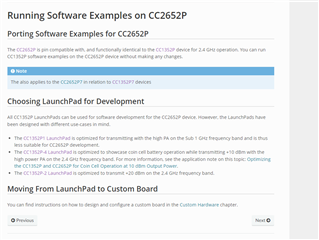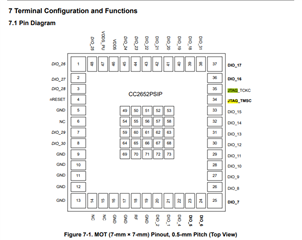Other Parts Discussed in Thread: CC2538, SYSCONFIG, CC2652P, CC1352P
Hello,
What pins of the CC2652PSIP chip are assigned for UART0 by Bootloader: DIO2,DIO3 or DIO12,DIO13 ?
The following documents "CC13x2, CC26x2 SimpleLink Wireless MCU" and "CC2538/CC26x0/CC26x2 Serial Bootloader Interface" have information only for CC26X2R.
Thanks,
Alex







